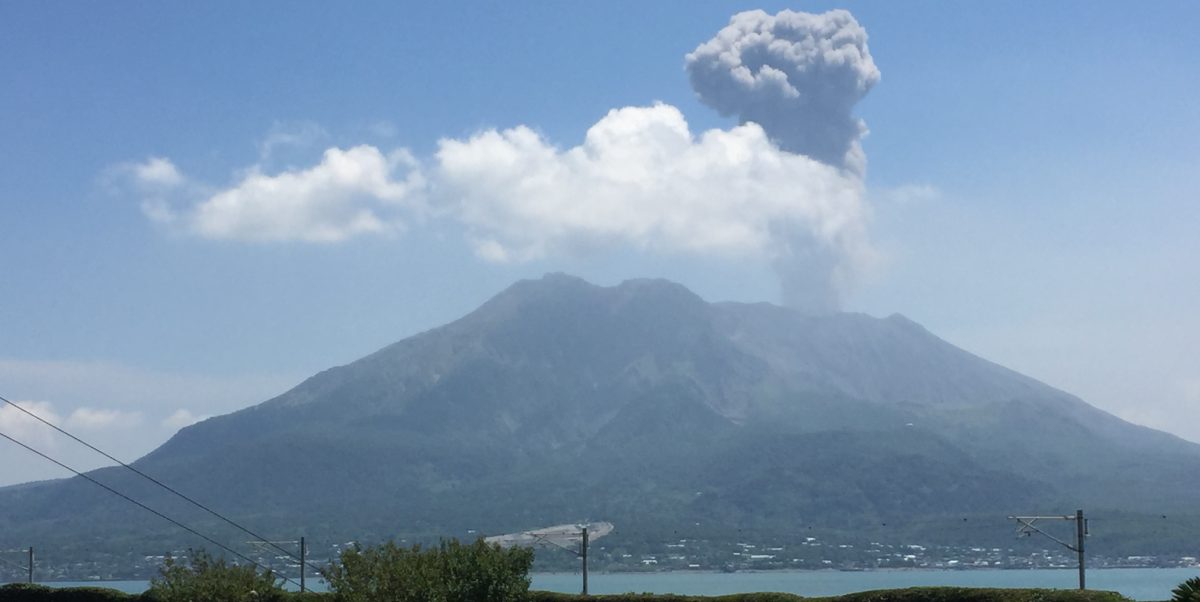Ever lay down for a nice 20-minute power nap, and then wake up 4 ½ hours later with an unshakeable grogginess monster on your back? Well, blogs don’t nap or get groggy, but whatever the literary equivalent of that is… Anyway, I felt like writing, so I’m writing. Simple enough.
I guess it’s obligatory that I give a paragraph to the corona situation, just for the sake of continuity. The reality is that the effect here has not really been all that pronounced. Kagoshima had fewer than 20 cases, even at peak infection rate. Schools, some restaurants and public places closed for a few weeks in April and May. Everyone wears masks (now, everyone’s spoken Japanese is unintelligible, not just mine). Hand sanitizer is at every entrance, everywhere. But that’s really it. The biggest effect has been that Japan is not allowing entry for anyone who has been to the States in the past month, I can’t go home now. Or technically, I can go home but I wouldn’t be able to come back. The fact that I can live through a global pandemic suffering only minor inconveniences gives you an idea of how the lifestyle and culture of Japan can resist outside influences. Kyushu is a separate island of an island nation and, when the people have resolved to do so, it’s quite easy to wall it off from the larger world.
I often write posts about how different life is here compared to the U.S., but as you can probably tell from my title, lately I’ve actually been thinking about how similar Kentucky and Kagoshima are to one another. They are modestly populated, but medium-sized places with only two medium-sized cities. People chuckle when these cities are called “big cities”, because nobody else in the country would consider them to be so. And while the rivalry here is not as fierce as Lexington and Louisville, both populations are convinced of the superiority of their city over the other. People from Kentucky and Kagoshima tend to be wary of outsiders, unusually friendly or, bizarrely, both. Both are rural places where the food is fresh, delicious, and source of great pride. And both people have the own way of speaking that is, seemingly defiantly, different than the “standard language”. But I reckon people ‘round these parts don’t pay no mind to other folks thinkin’ they talk funny. チェスト!(P.S. Yoshi has begun experimenting with a Kentucky accent now. I know that I’m not the most subjective person you could ask, but it’s probably the cutest thing in the universe).
Seeing as I haven’t written since the beginning of the school year in April, I should make note of a few changes in my work environments. Sadly, it was time for my friend Kazu at Satsumachuo (“the farm school”) to transfer, so he no longer works there. So, the steady stream of sweets and snacks provided by him, not to mention a lot of enjoyable conversation, has dried up. Though the English teachers there are still nice to me, I am now fairly consistently left alone almost completely at that school. Which is nice on some days and a bit lonely on others. Cool bit of trivia, though – the new English teacher at Chuo has actually met Munenori Kawasaki! He came to her old school to talk to students and teach them baseball. She even has pictures to prove it, so I’m obviously insanely jealous of that.
Some good news, though, is that Horinouchi-sensei, a teacher I worked with in my first year here, has returned to Sendai High School! They were in need of a part-time teacher there, and the department pretty quickly rallied to bring her out of retirement. It’s great to have my coffee-friend back in the office. Sarcasm is often lost in translation here, but having Horinouchi-sensei back means that English snark has returned to my work life in at least one of my schools. Also, she gives me candy sometimes. So, there’s that.
Some photos for those TL; DR folks. Pay particular attention to the big-ass Kirby plush I won, the big-ass beef katsu that I ate, and the big-ass waterfall that we visited. Because ‘Murica.
